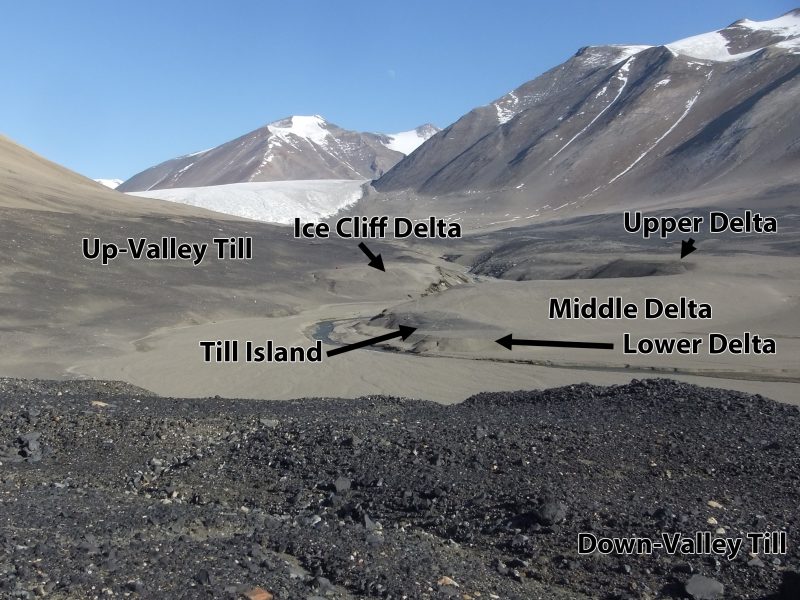Paleo Lakes Hold Climate Clues
November 20, 2017

In Antarctica, some lakes that formed during the last ice age stuck around for up to 10,000 years. The sediment these “paleo lakes” left behind could provide a record for investigating the continent’s climate.
“We think of Antarctica as only producing climate history information from ice cores, but these lakes were probably much longer lived than previously thought,” said then University of Texas Institute for Geophysics Research Associate Joseph Levy, who led research on the ancient lake remains.
The study was published in April 2017 in the Geological Society of
America Bulletin.
The research used both old fashioned radiocarbon dating and newer optically/infrared stimulated luminescence (OSL) dating techniques.
The OSL technique dates sediment directly, instead of relying on algal mats and other organic matter as used by radiocarbon methods. The research found that radiocarbon dates were consistently older than OSL results, in some cases up to 10,000 years.
“I hope that it sheds light on the fact that there were relatively recent, long-lived lakes in the terrestrial parts of Antarctica that could be used to collect paleoclimate proxies for reconstructing what’s going on at the Antarctic coast,” Levy said.
Back to the Newsletter